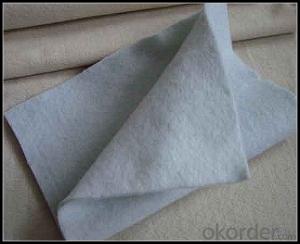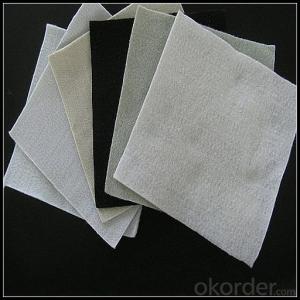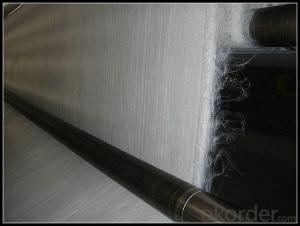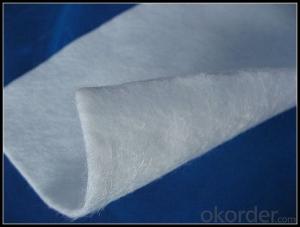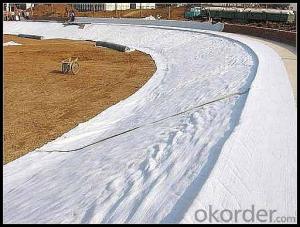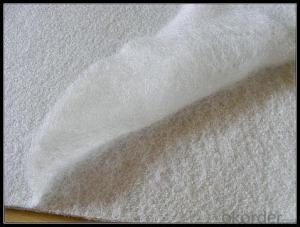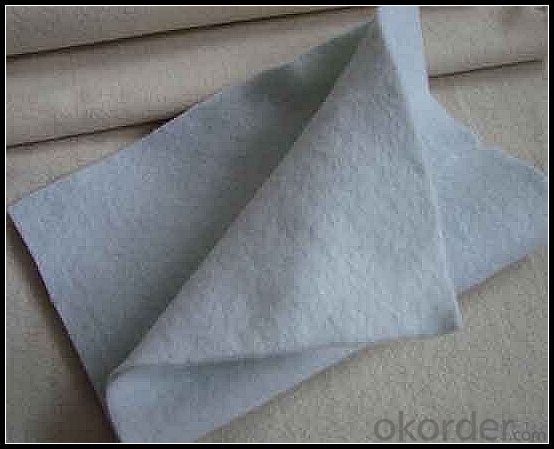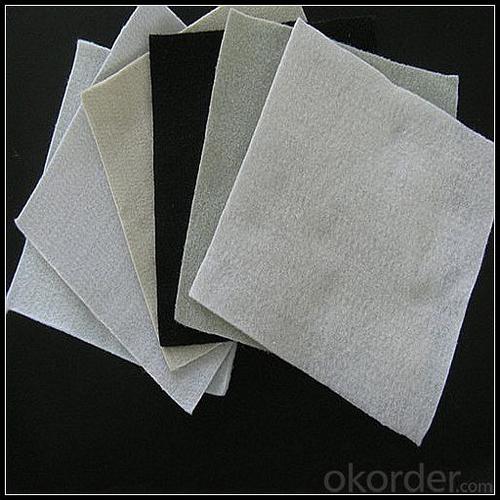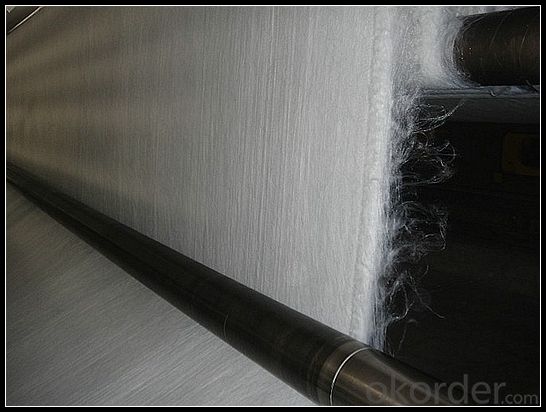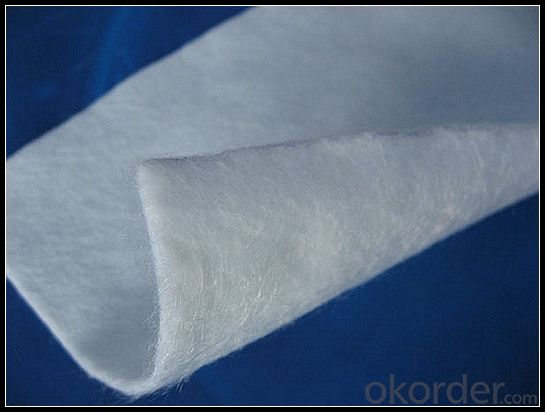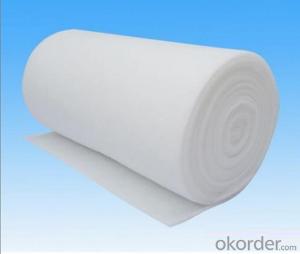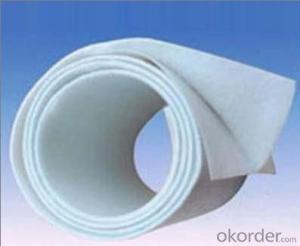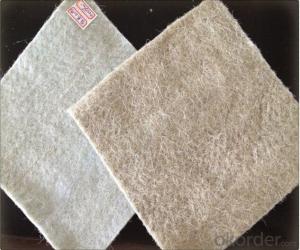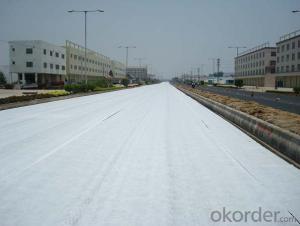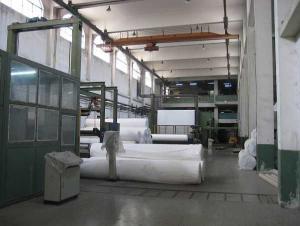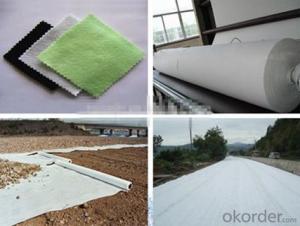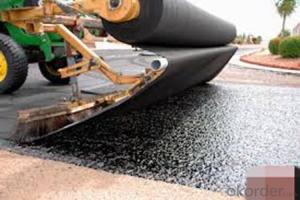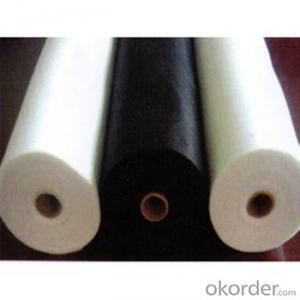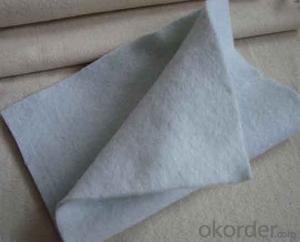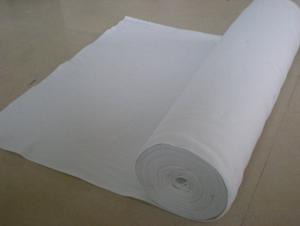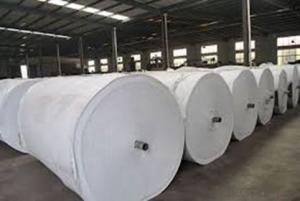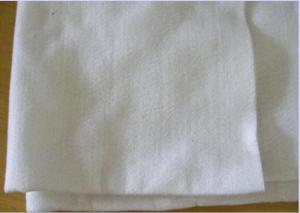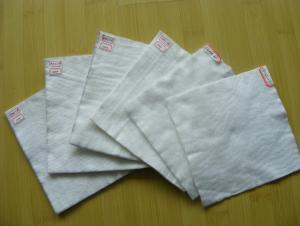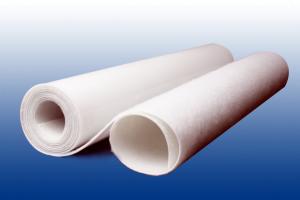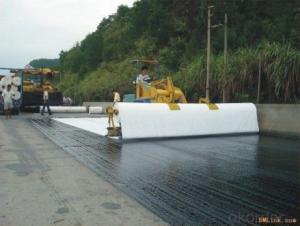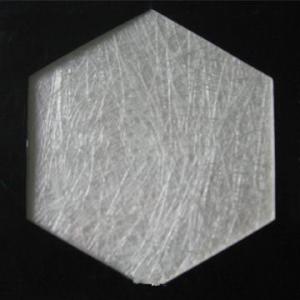592 PP Non-Woven Geotextile Fabric with Cheap Price for Railway
- Loading Port:
- China main port
- Payment Terms:
- TT OR LC
- Min Order Qty:
- 1000 m²
- Supply Capability:
- 1000000 m²/month
OKorder Service Pledge
OKorder Financial Service
You Might Also Like
Specification
Filtration :
1) Weight / Mass: 100g/m2-800g/m2
2) Width: Within 8 m (1m-8m)
3) Length: 50m-100m/roll (as request)
4) Material: PP / PET
Type:
Geotextiles, Nonwoven Geotextile woven Geotextile
Place of Origin:
Shandong, China (Mainland)
Brand Name:
CMAX
Model Number:
CMAX-S001
Application
1. Environmental protection, sanitation (such as solid waste landfills, sewage treatment plants, power plants Chi-conditioning, industrial, hospital solid waste, etc.) .
2. Water (such as rivers, lakes and reservoirs of the anti-dam, plugging, reinforcement of the canal seepage, the vertical wall of the heart, slope protection, etc.).
3. Municipal Engineering (subway, on the ground floor of the building, planted roof, the roof garden of anti-seepage, sewage pipes lining, etc.).
Photos:
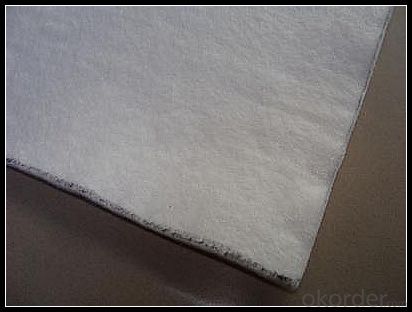
Packaging & Shipping
Packing: PLASTIC FILM INSIDE, AND WOVEN BAG OUTSIDE
Shipping: About 15 days after receipt the deposit
geotextile fabric
permeability,filtration,easy for construction
ISO and CE certificate
Good quality and competitive price
Our Service
Quality assurance
1.On a regular basis or as per your request,we entrust national testing agencies to conduct quality inspections
2. Strictly in accordance with the ISO9001-2008 international quality system standard,we monitor and manage the whole process throughout production,quality testing,and measurement to ensure product quality
3. For quality-related construction delay or substandard construction(except for damage or losses due to customer’s responsibility or irresistible natural disasters),we have refunding,replacement,and repair services.We will respond to customers’ feedbacks on quality issues within 24 hours.
After-sales service
1.In order to provide customers with comprehensive technical support,we will provide technical and other related information upon request in a timely manner.
2.In required,we will appoint specialized technicians to the construction site to give technical trainings to construction people,and offer technical guidance throughout the whole construction process.
3.For damage due to shipment and delivery,after we receive the complaint,we will check the issure through provided pictures and videos.If our responsibility is confirmed,we wil offer free replacement.
4.When the construction is completed,as your request,our technical staff may participate in the final acceptance.
FAQ:
Q: What kind of payments does jenor support?
A: T/T, L/C, Cash are accepted.
Q: Do you charge for the samples?
A: Accordeing to our company policy, the samples are free, we only charge the freight fee. And we will return the freight fee during the next order.
Q: Can you produce according to customers' design?
A: Sure, we are professional manufacturer, OEM and ODM are both welcome.
Q: Do you have other products?
A: Yes, please check the pictures:
- Q: How do geotextiles contribute to disaster management?
- Geotextiles contribute to disaster management by providing effective erosion control, stabilizing slopes, and preventing soil movement during natural disasters such as floods, landslides, and earthquakes. They also help in the construction of temporary shelters, emergency access roads, and retaining walls, enabling quick response and recovery efforts after a disaster. Additionally, geotextiles can be used for water filtration, drainage, and reinforcement, enhancing the overall resilience and effectiveness of disaster management strategies.
- Q: How do geotextiles affect soil compaction?
- Geotextiles can help reduce soil compaction by acting as a barrier between the soil and external forces. They distribute load and stress more evenly, preventing excessive compaction by promoting better soil structure and drainage.
- Q: How do geotextiles help with sediment retention in sediment basins?
- Geotextiles help with sediment retention in sediment basins by acting as a physical barrier that traps sediment particles while allowing water to pass through. They prevent erosion and sediment movement by stabilizing the soil, reducing the flow velocity of water, and promoting sediment settlement within the basin.
- Q: How do geotextiles help with erosion control?
- Geotextiles help with erosion control by providing a protective barrier against soil erosion. They are designed to be permeable, allowing water to pass through while preventing the loss of soil particles. Geotextiles also stabilize soil by increasing its strength and preventing it from being carried away by wind or water. Additionally, these materials promote vegetation growth by retaining moisture and nutrients, further enhancing erosion control efforts.
- Q: What are the different geotextile installation techniques in reinforcement?
- There are several geotextile installation techniques used in reinforcement, including direct placement, sandwich method, and wrap-around method. In direct placement, the geotextile is laid directly on the soil or subgrade and then covered with additional soil or aggregate. The sandwich method involves placing the geotextile between two layers of soil or aggregate, creating a reinforced layer. The wrap-around method involves wrapping the geotextile around a structure, such as a retaining wall or pipe, to provide additional support and stability. These installation techniques help improve the strength and performance of soil structures in various engineering applications.
- Q: Where the detection of geotextiles more authoritative
- To the authority must find the authority of the body, the international authority was undoubtedly SGS, geotextile common test such as area weight, tear strength, puncture strength.
- Q: How do geotextiles improve the performance of pavements?
- Geotextiles improve the performance of pavements by providing reinforcement and stabilization to the underlying soil. They act as a barrier, preventing the mixing of different layers and reducing the potential for rutting and cracking. Additionally, geotextiles enhance drainage and filtration, allowing for better water flow and reducing the risk of moisture-related damage. Overall, their inclusion in pavement construction increases durability, extends the lifespan, and reduces maintenance costs.
- Q: 800g / m2 non-woven geotextile vertical permeability coefficient is generally how much
- 800g / m2 non-woven geotextile vertical permeability coefficient is: 6.1 × 10-2
- Q: Composite geotextile plastic composite
- 1, plastic composite geotextile is woven with a woven fabric as the substrate, the extruded coated polyolefin resin film or polyolefin resin sandwich layer, the woven cloth and all kinds of Zhang made together. 2, the product made of bags with light weight, acid and alkali resistance, strength, moisture and other advantages. 3, widely used in chemical fertilizer, synthetic resin, coarse salt, ore and cement products such as packaging, is a good packaging of heavy packaging materials
- Q: What are the different weight options available for geotextiles?
- Geotextiles typically come in a range of weight options, which can vary from lightweight to heavyweight. These weight options are measured in terms of grams per square meter (gsm) or ounces per square yard (oz/yd²). The specific weight option chosen for a geotextile depends on the project requirements, such as the soil conditions, desired strength, and intended application.
Send your message to us
592 PP Non-Woven Geotextile Fabric with Cheap Price for Railway
- Loading Port:
- China main port
- Payment Terms:
- TT OR LC
- Min Order Qty:
- 1000 m²
- Supply Capability:
- 1000000 m²/month
OKorder Service Pledge
OKorder Financial Service
Similar products
Hot products
Hot Searches
Related keywords
